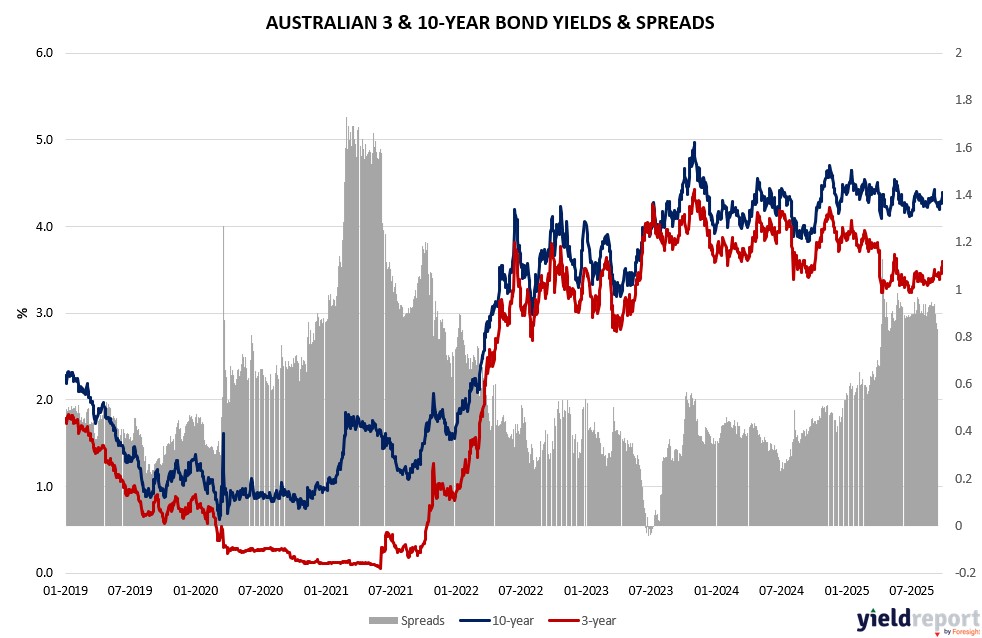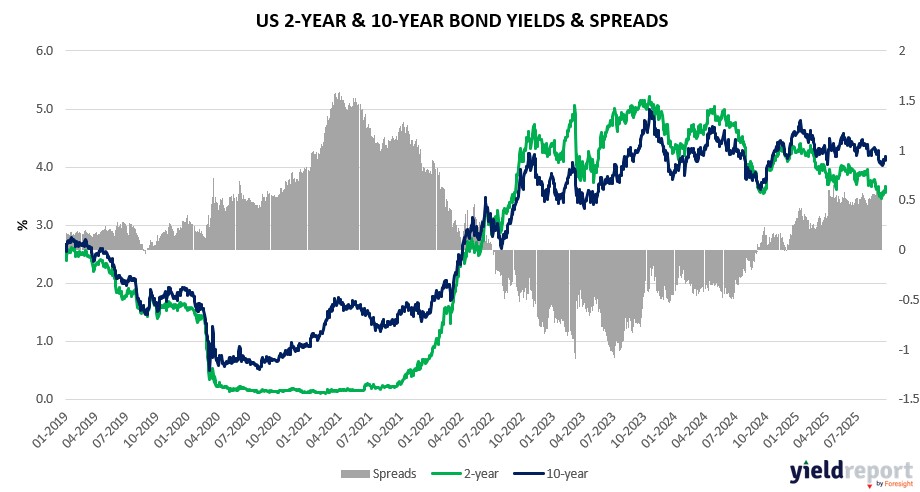| Close | Previous Close | Change | |
|---|---|---|---|
| Australian 3-year bond (%) | 3.596 | 3.556 | 0.04 |
| Australian 10-year bond (%) | 4.392 | 4.341 | 0.051 |
| Australian 30-year bond (%) | 5.063 | 5.05 | 0.013 |
| United States 2-year bond (%) | 3.659 | 3.604 | 0.055 |
| United States 10-year bond (%) | 4.178 | 4.141 | 0.037 |
| United States 30-year bond (%) | 4.7576 | 4.7428 | 0.0148 |
Overview of the Australian Bond Market
Australian government bonds gained modestly on September 29, 2025, with the 10-year yield declining two basis points to 4.31% amid global safe-haven flows and steady regional sentiment. The 2-year yield fell to 3.48%, 5-year to 3.75%, and 15-year to 4.66%. The moves aligned with broader Treasury gains as US shutdown risks supported bonds, though local focus remains on Tuesday’s RBA decision to hold rates unchanged at 3.6%.
Upcoming data includes August building approvals, expected to rise 3% month-on-month, and the S&P Global Manufacturing PMI final. Wednesday brings goods balance and trade figures, with exports seen influencing sentiment amid China’s stimulus measures.
Bond strategists note the market’s sideways tracking relative to surging international indices, positioning Australia for rebalancing inflows, though commodity weakness in iron ore and coal tempers optimism.

Overview of the US Bond Market
Treasuries rose on September 29, 2025, with the 10-year yield declining to 4.14% as shutdown risks weighed on the dollar and boosted safe-haven demand, potentially restraining economic activity. The 2-year yield held at 3.62%, 5-year at 3.73%, and 30-year at 4.70%. Shorter maturities saw mixed moves, with the 3-month at 3.86% and 6-month at 3.73%. The session highlighted concerns over delayed economic data like Friday’s nonfarm payrolls, crucial for gauging labor market health and Fed rate decisions.
Dallas Fed President Lorie Logan renewed calls to replace the federal funds rate benchmark with alternatives like the Tri-Party General Collateral Rate (TGCR) for better signaling of money-market stress, noting the fed funds market’s diminished volume below $100 billion daily amid abundant liquidity from past bond-buying programs. This push comes as the rate has become more a policy signal than an active interbank tool, potentially slow to reflect liquidity changes. Strategists suggest a gradual transition, possibly over a year, while maintaining the fed funds rate for existing contracts.
Economic resilience tempers rate-cut expectations, with Tuesday’s JOLTS report on job openings and Wednesday’s hiring data building anticipation for Friday’s payrolls, amid recent negative revisions. Fed speakers’ comments underscore balanced risks, with inflation above target but employment concerns rising, as policymakers weigh October moves.


